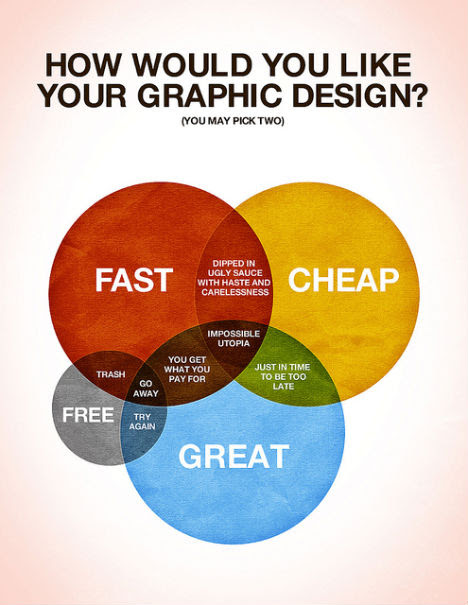Iron Triangle
https://en.wikipedia.org/wiki/Project_management_triangle
Good-fast-cheap - pick 2. It is true that without open source collaboration, free as in freedom is not possible.
OSE Case
Simply Put
The notion that a product or service cannot be optimized in all of its aspects is a clear example of scarcity thinking. Such thinking misses the point that open collaboration and development produces superior results. See Linux of Vaccines as a good and powerful example of breaking the iron triangle. OSE's Extreme Manufacturing and Extreme Enterprise models are examples where the Iron Triangle is smashed - with open collaboration.
Technically Speaking
Extreme Manufacturing via modularity, collaborative design for optimization, modular breakdown, proper collaboration architecture, integration of design-build-use-service issues by extremely tight coordination between these phases, open source, and test-driven design - beats the trilateral impossibility.
Extreme manufacturing is fast.
Global collaboration makes things good.
Lowered development costs for optimizing design, and Technological Recursion down to producing raw materials - makes things cheap.
Degeneracy, Modularity, and Lifetime Design make things 100x cheaper.
Swarm Builds make things 10x faster. Open collaborative design makes things 10x better.
How
How do we do it?
- Optimize and robustify design
- Collaborate towards DMS
- Make it modular and scalable - 10x value
- Make it lifetime design - 10x value
- Focus on easy-to-source materials
- Focus on environmentally sound practice
- Focus on open design and collaboration as an advantage
- Consider the integrated process of CAD-BOM-Build that comes from build experience, then design experience, then enterprise experience.
- Tech Recursion up to 'free' materials
- Product Ecologies fro integration into a larger ecosystem
- DfM, DfD
- Second Toyota Paradox.
- Degeneracy to one - not one item but one Construction Set
